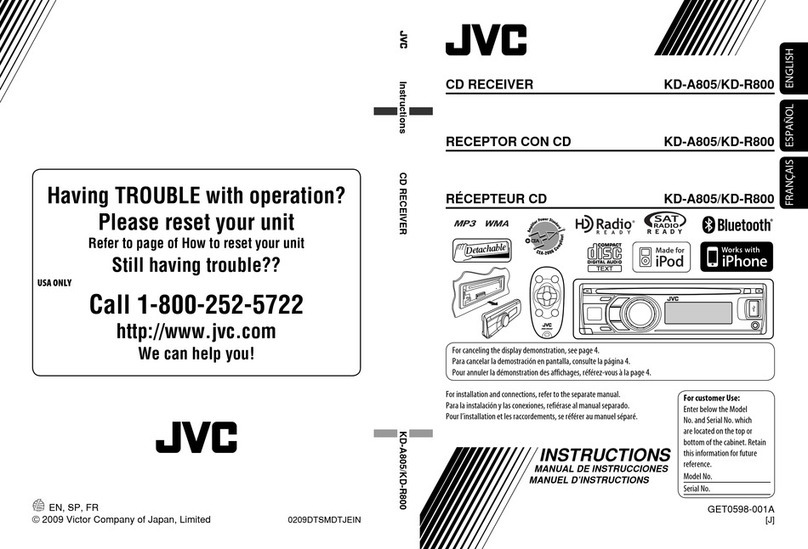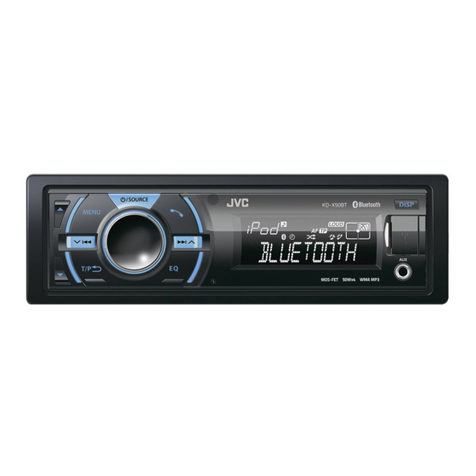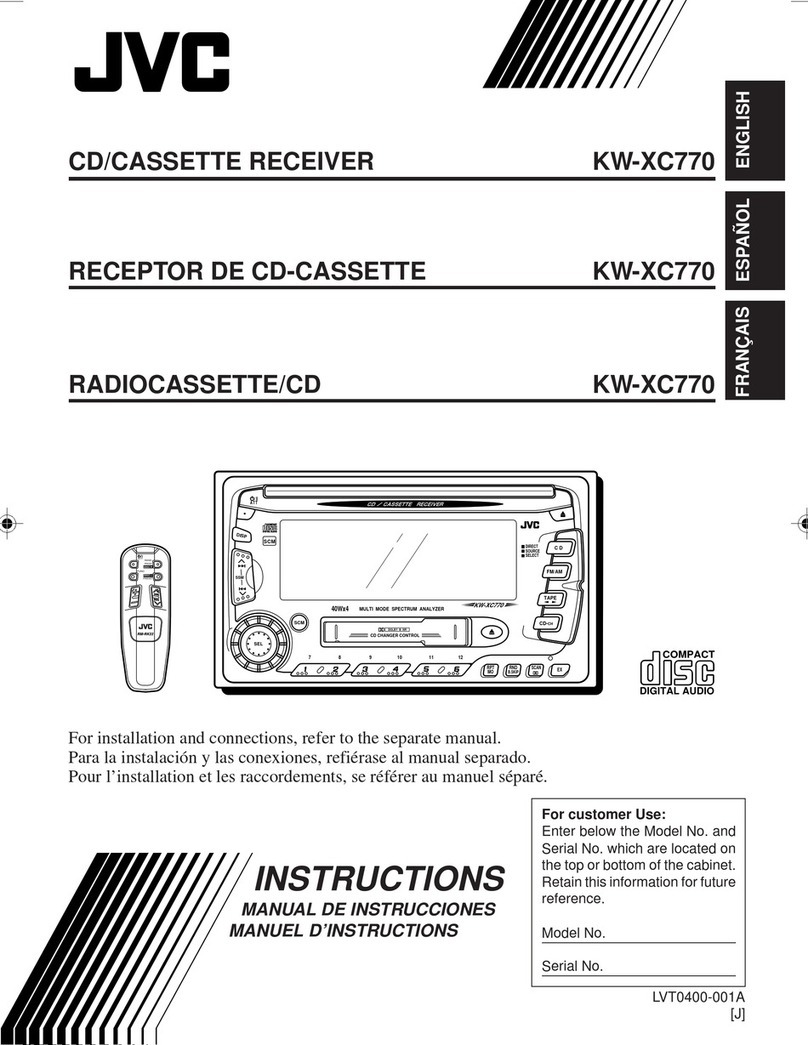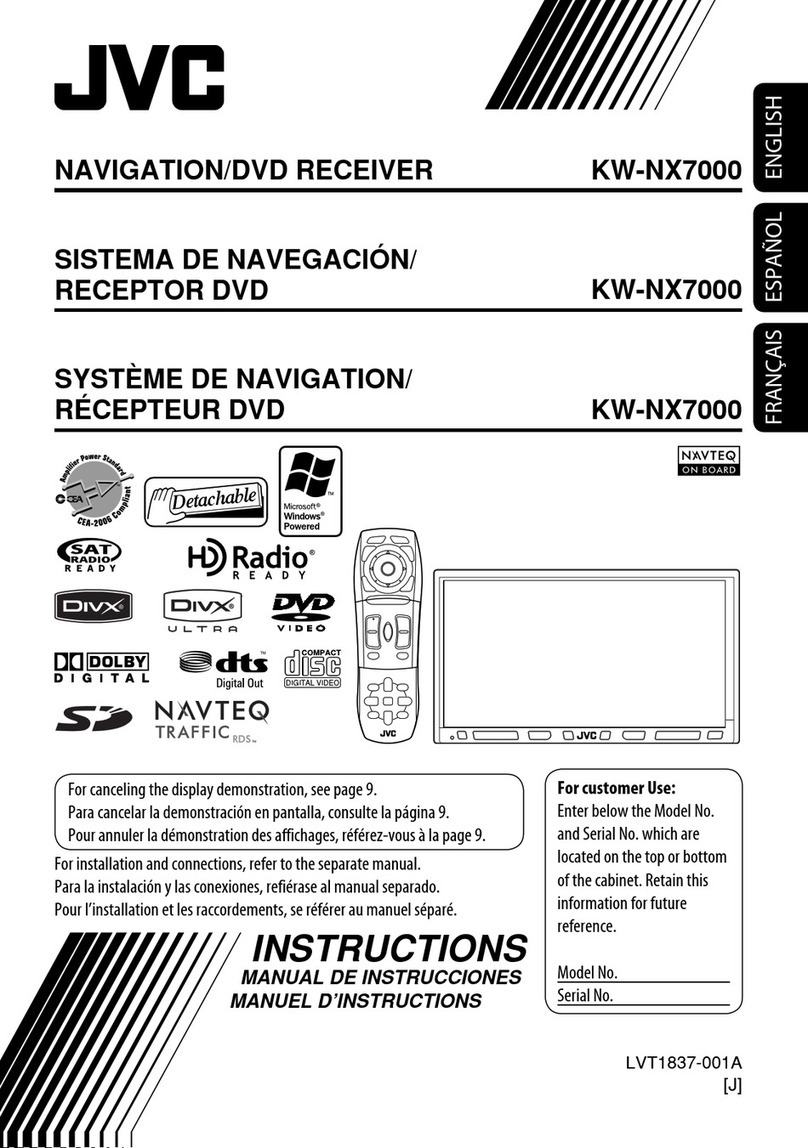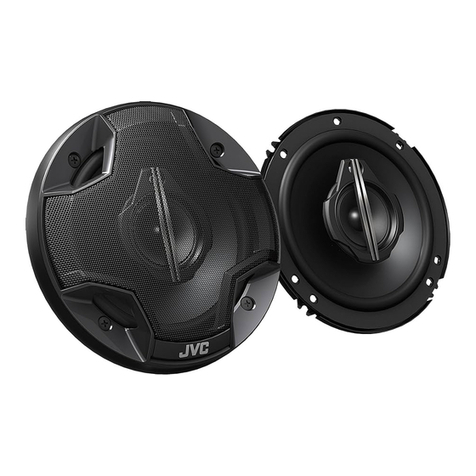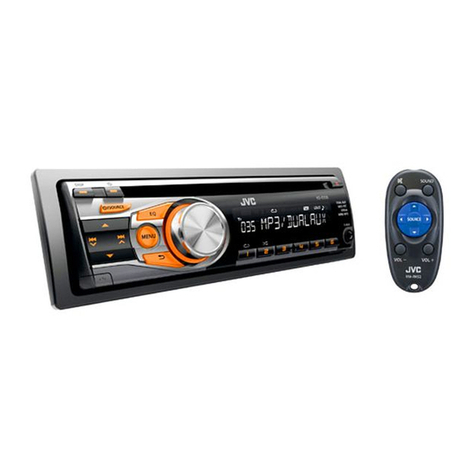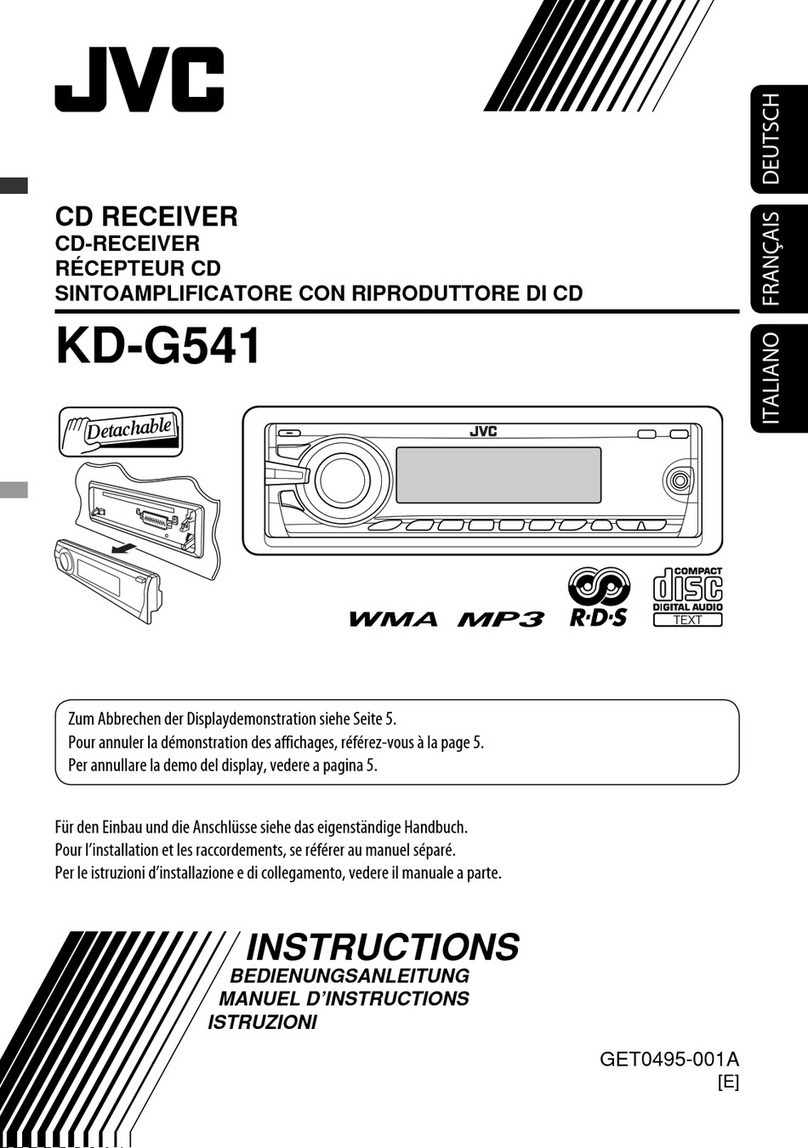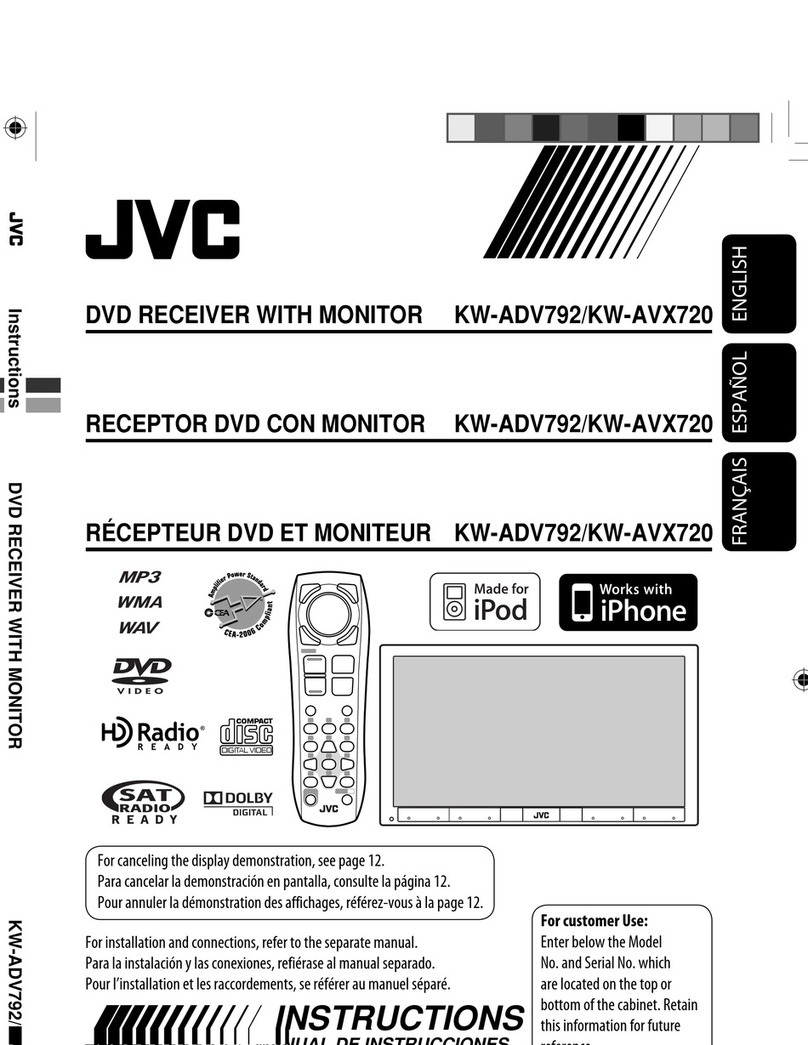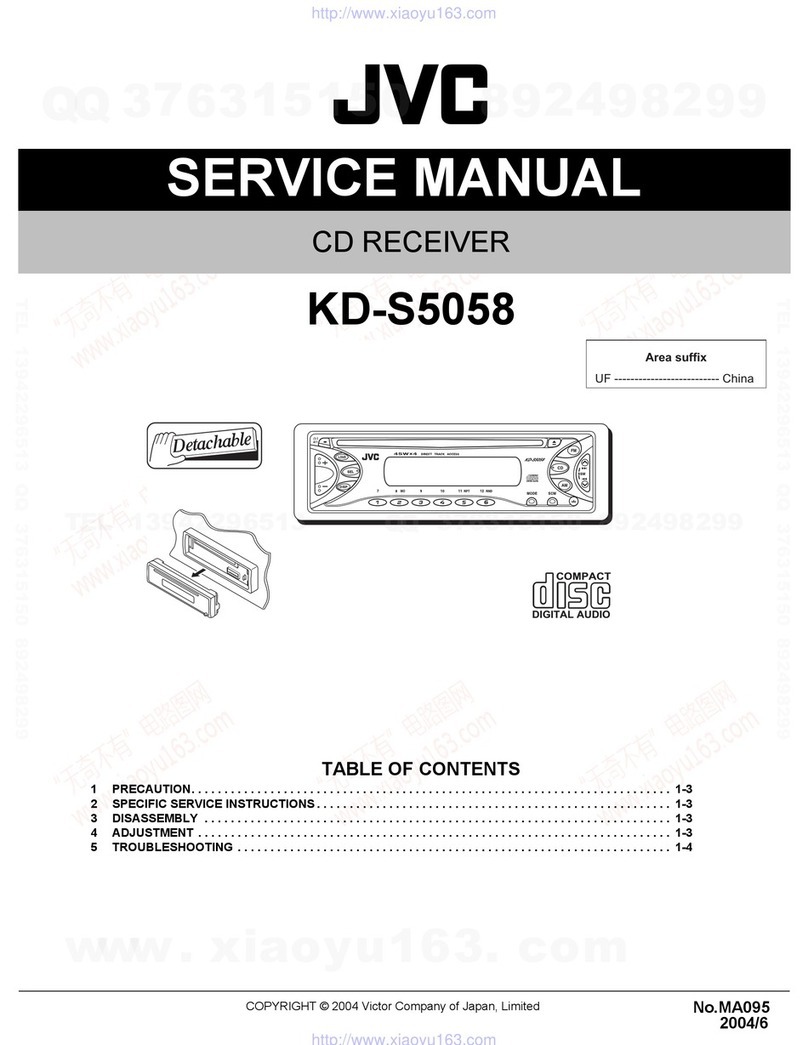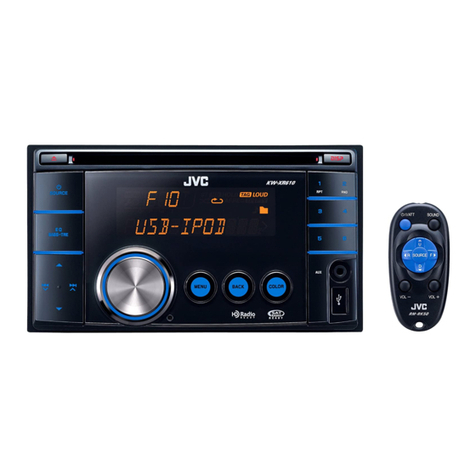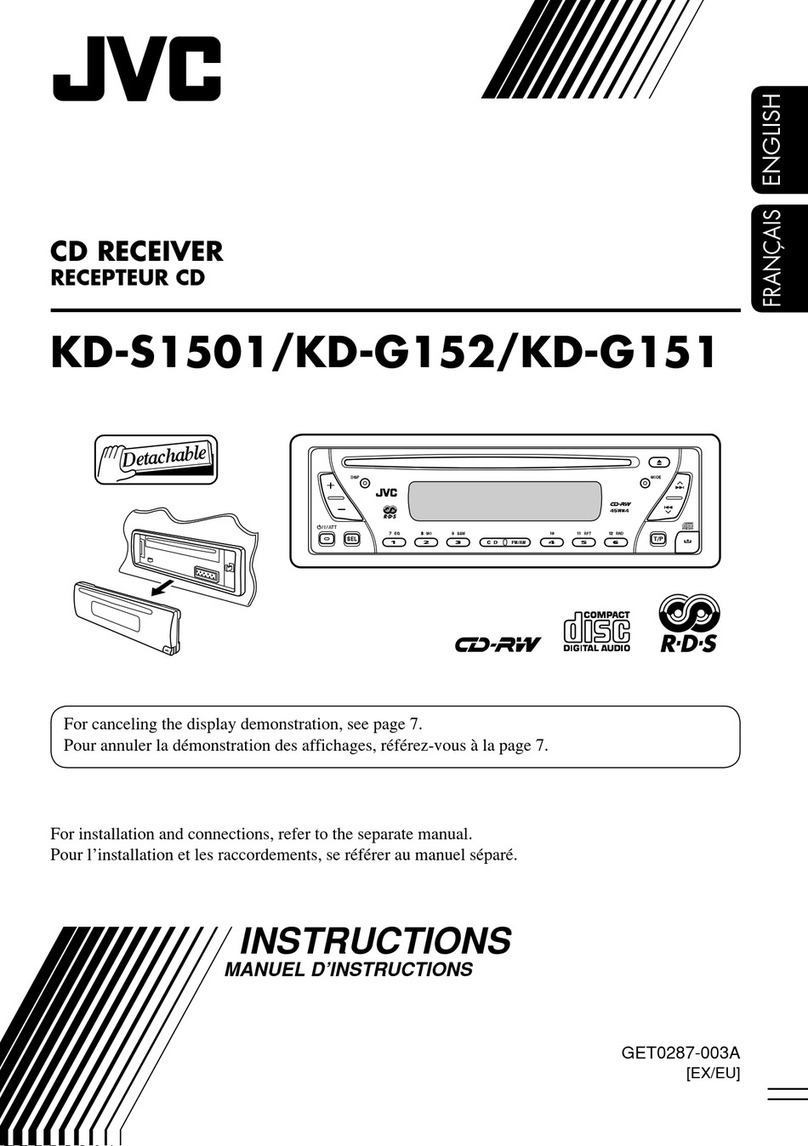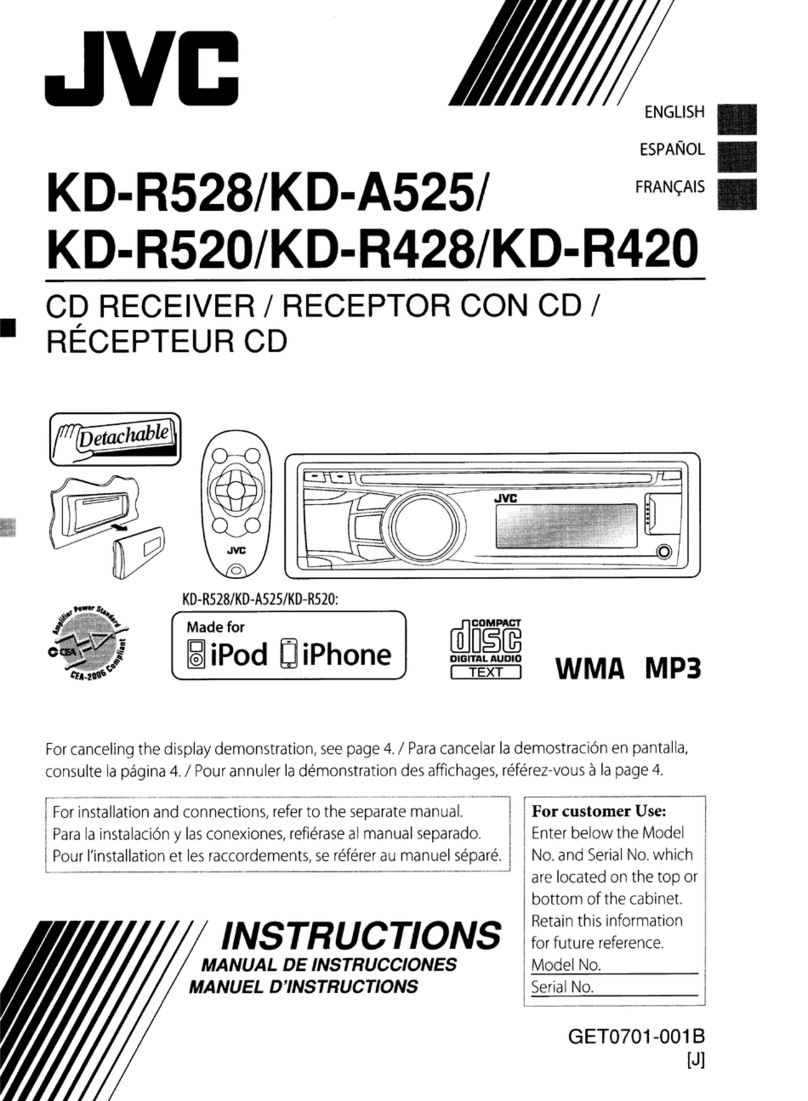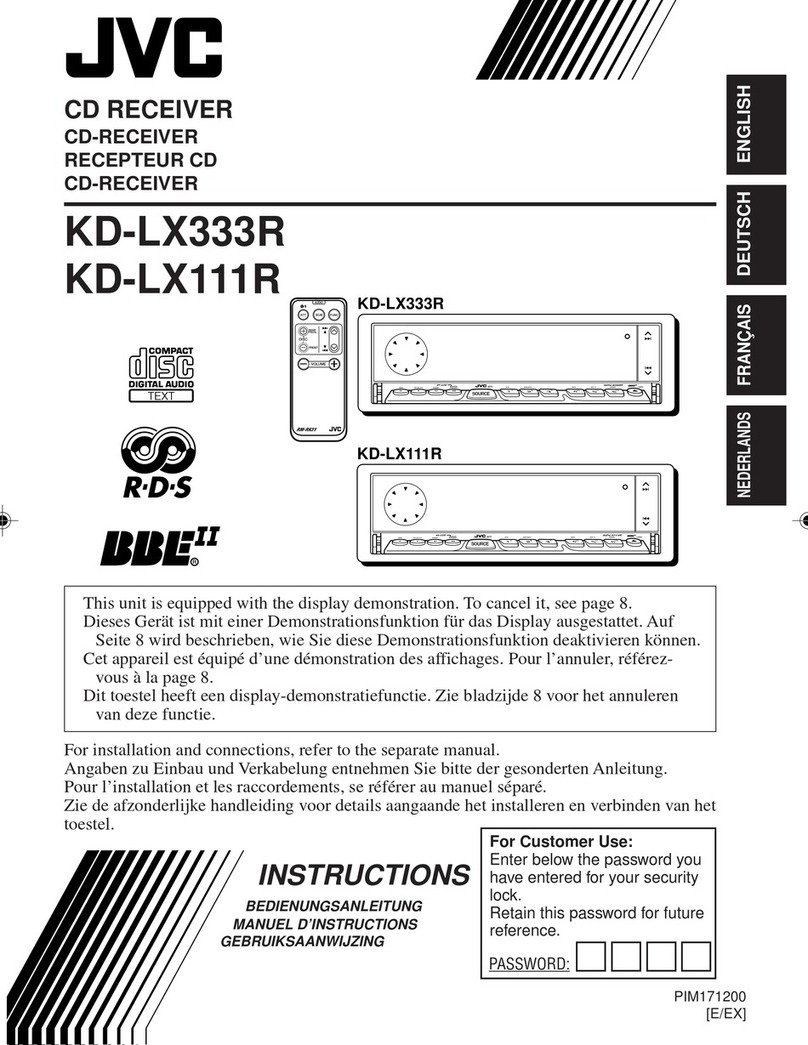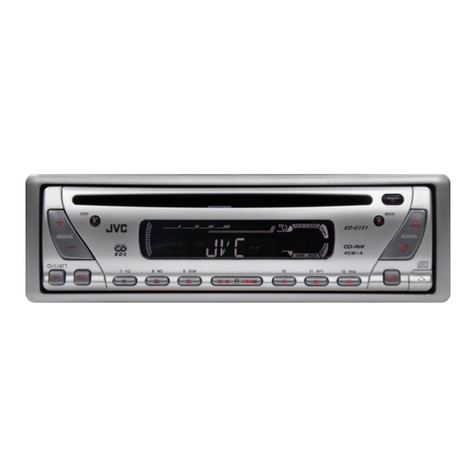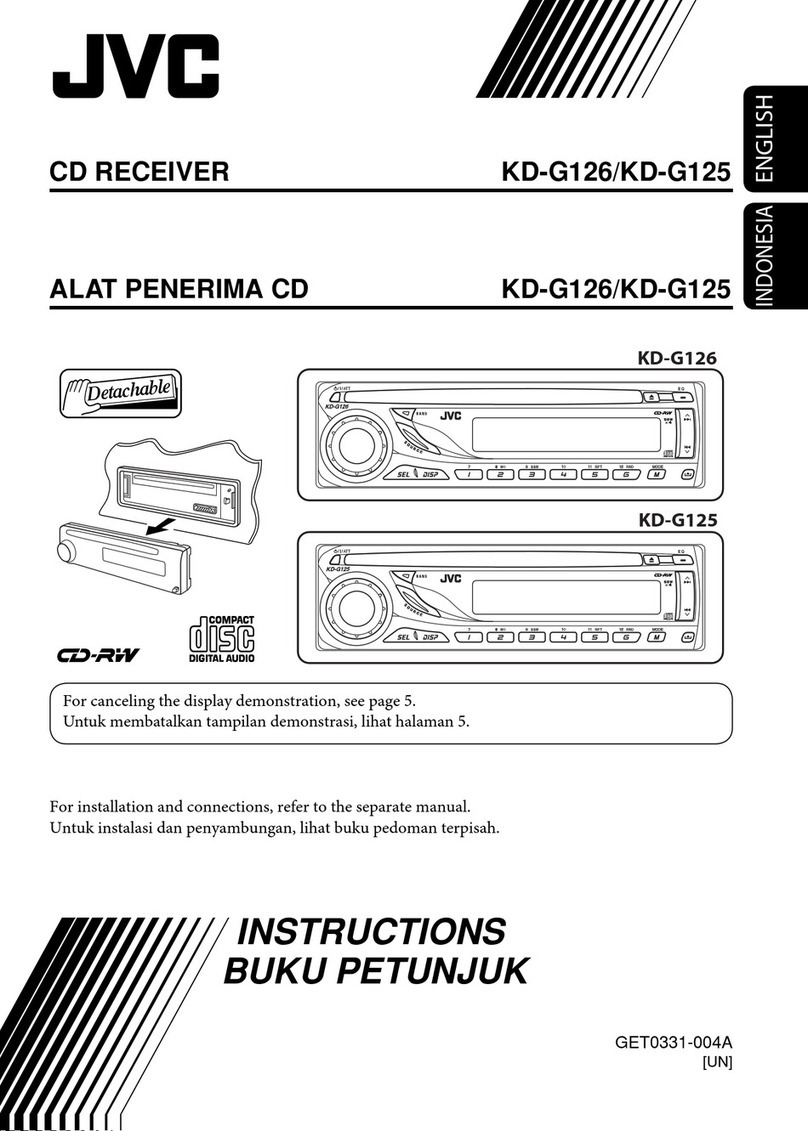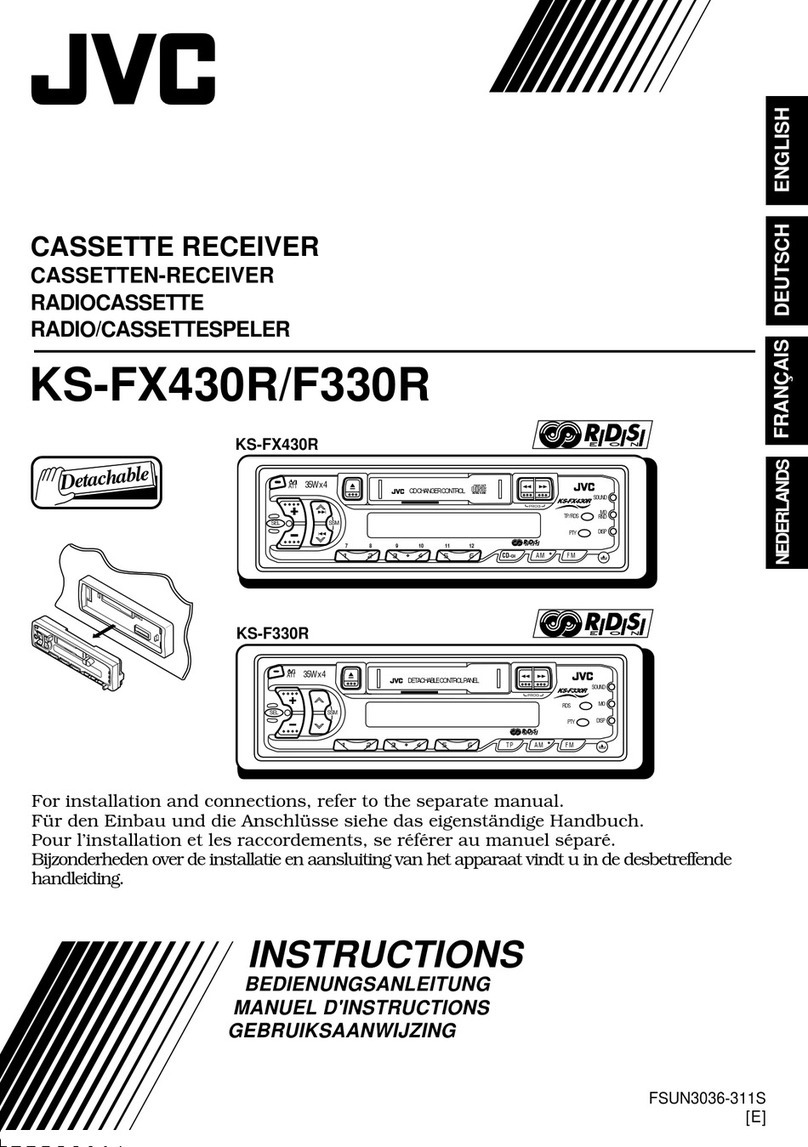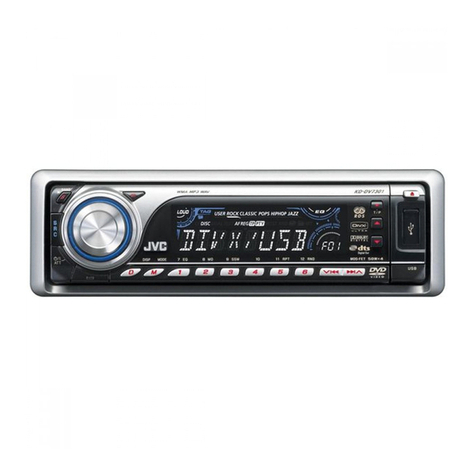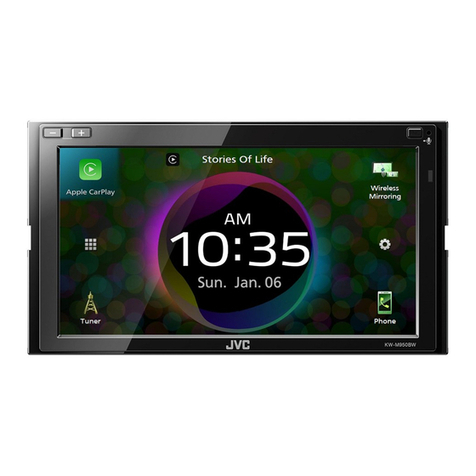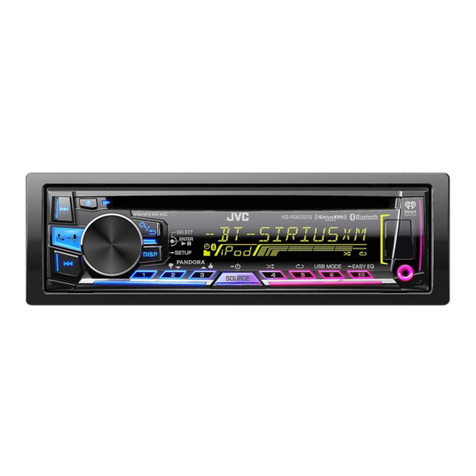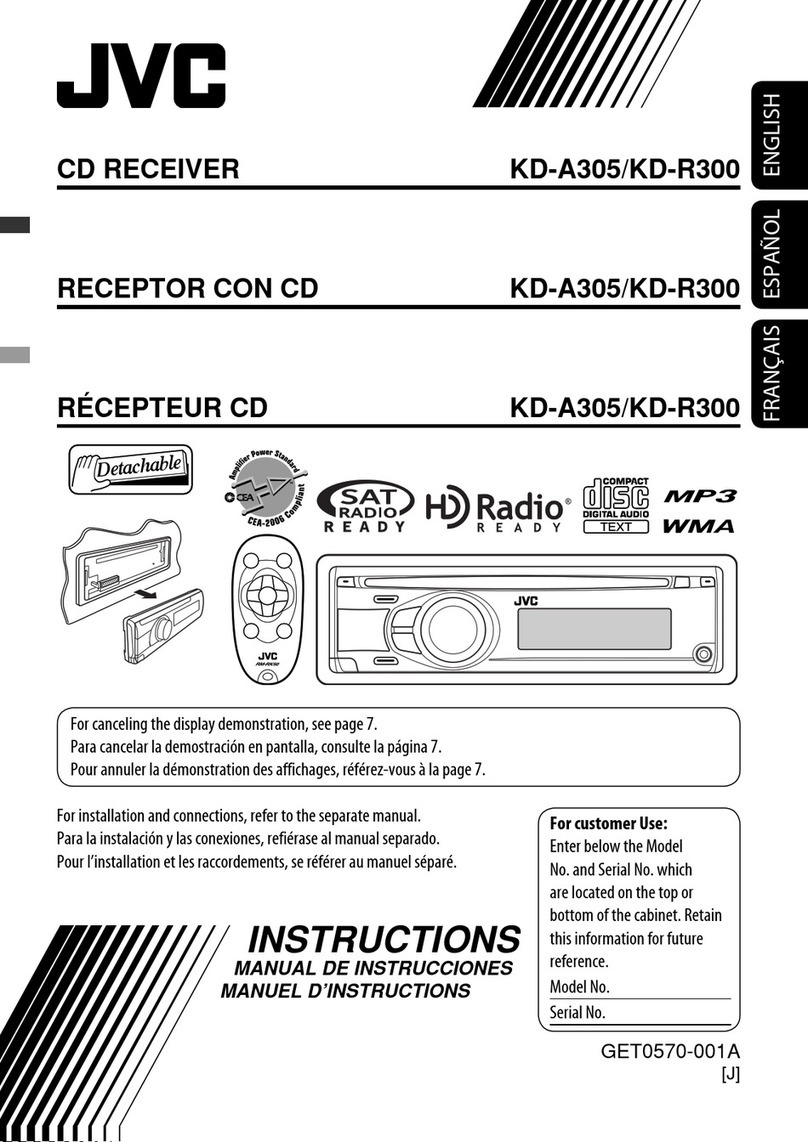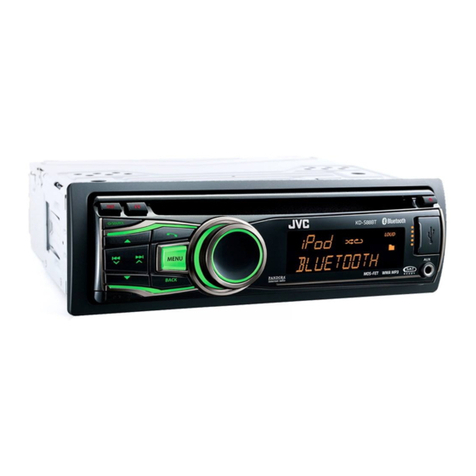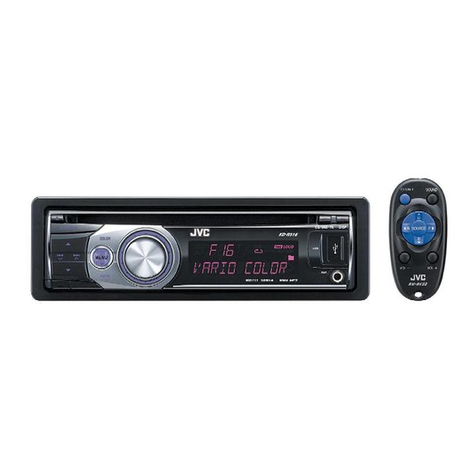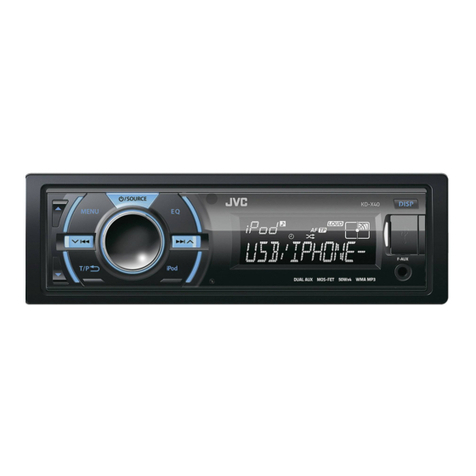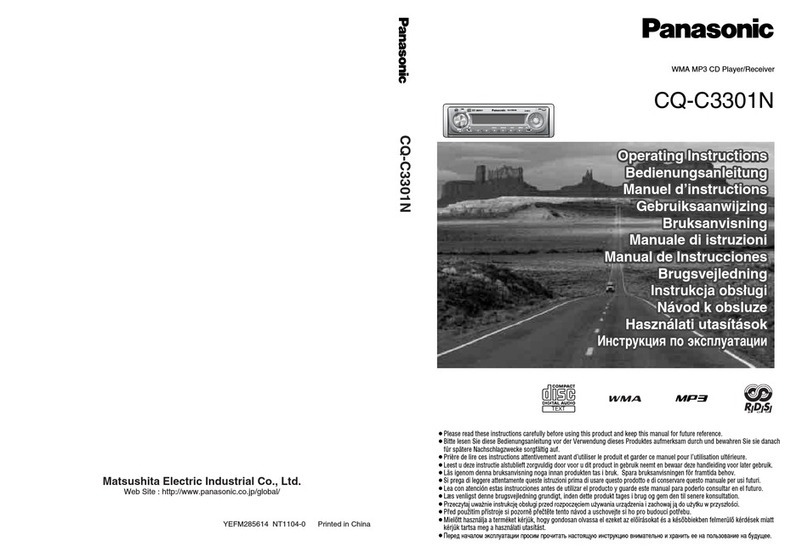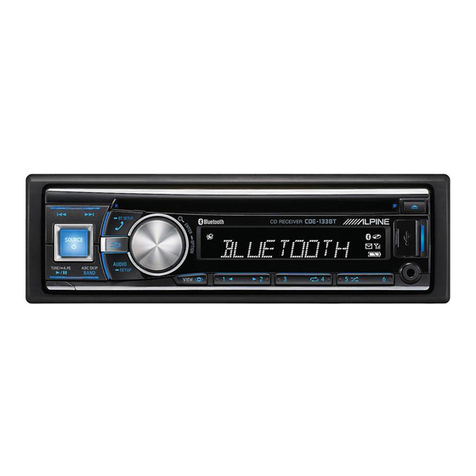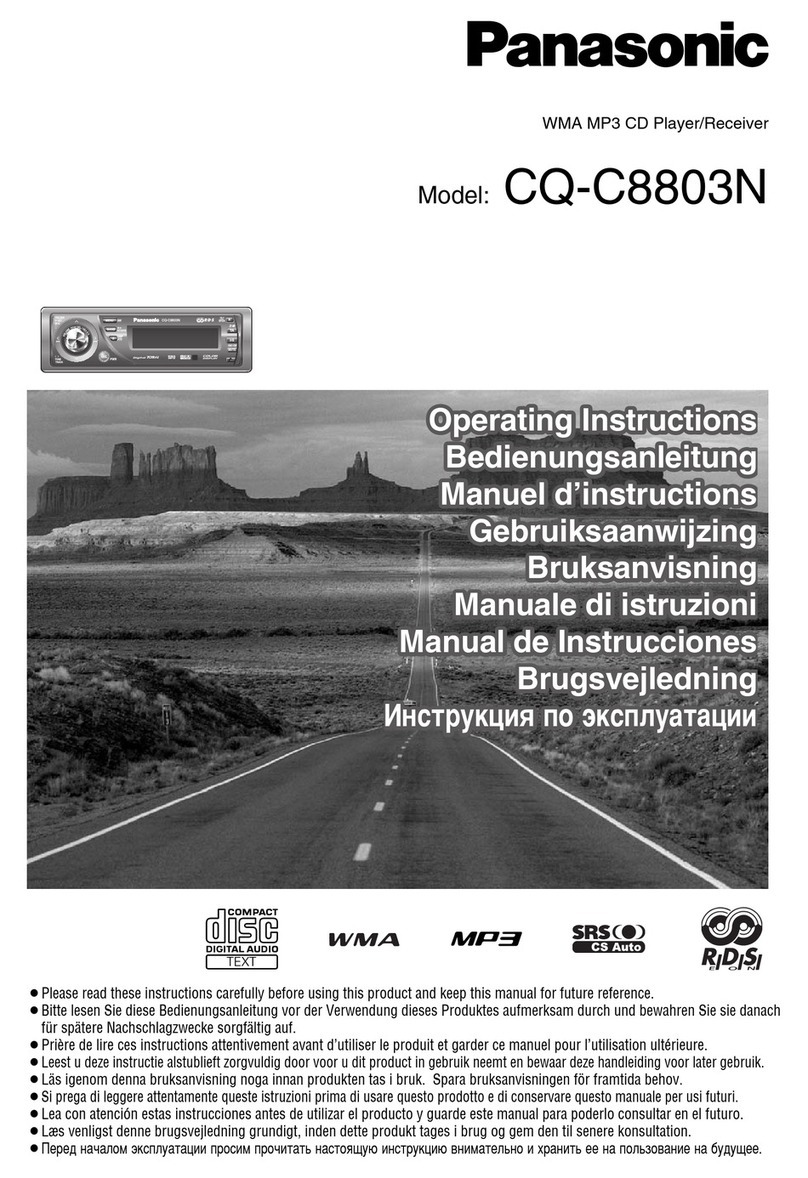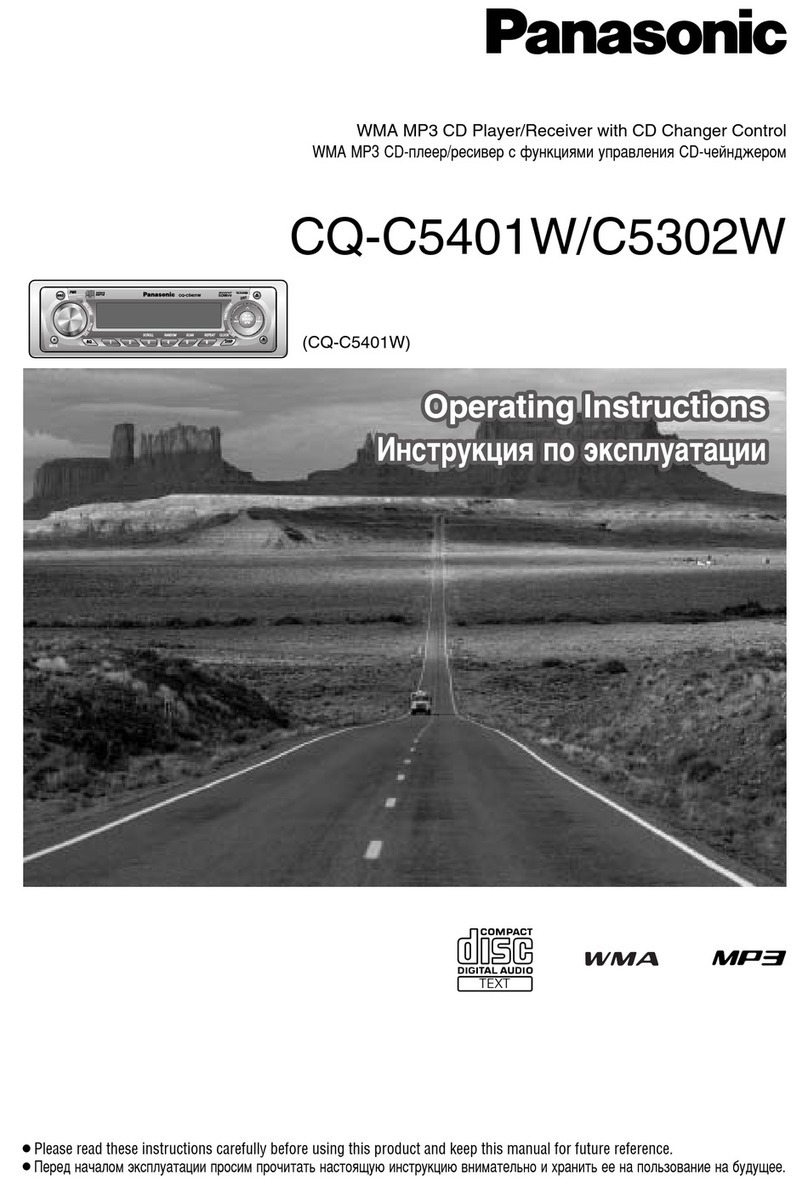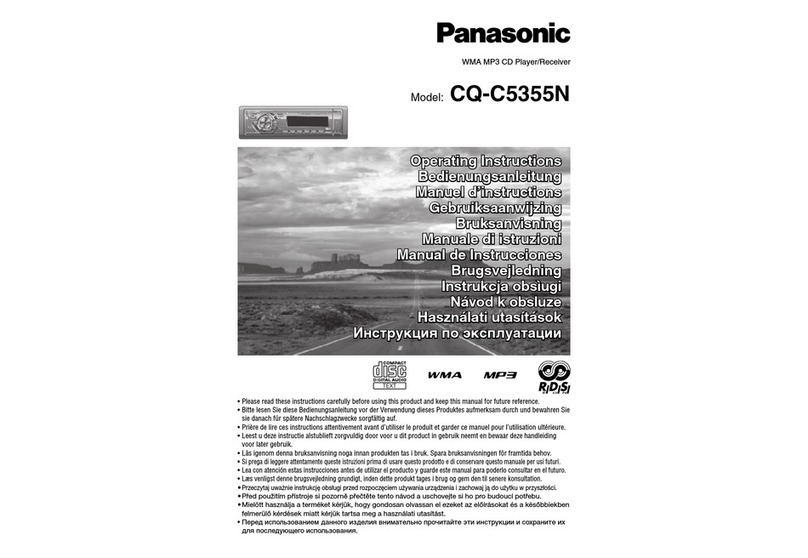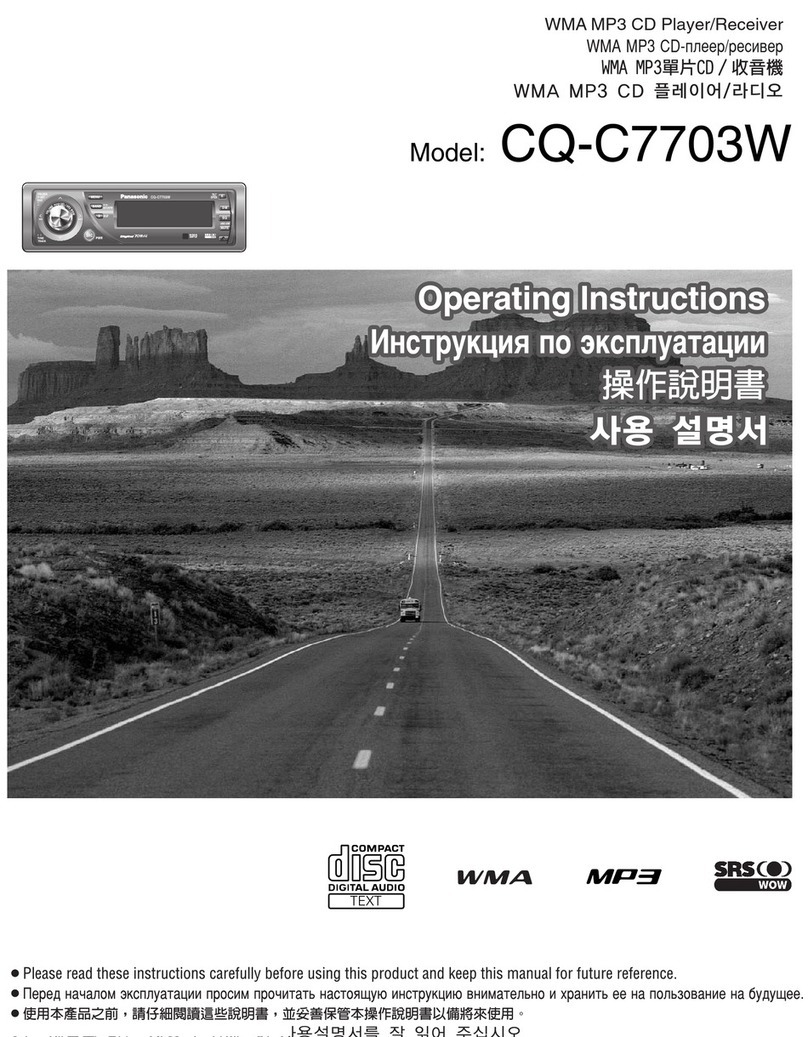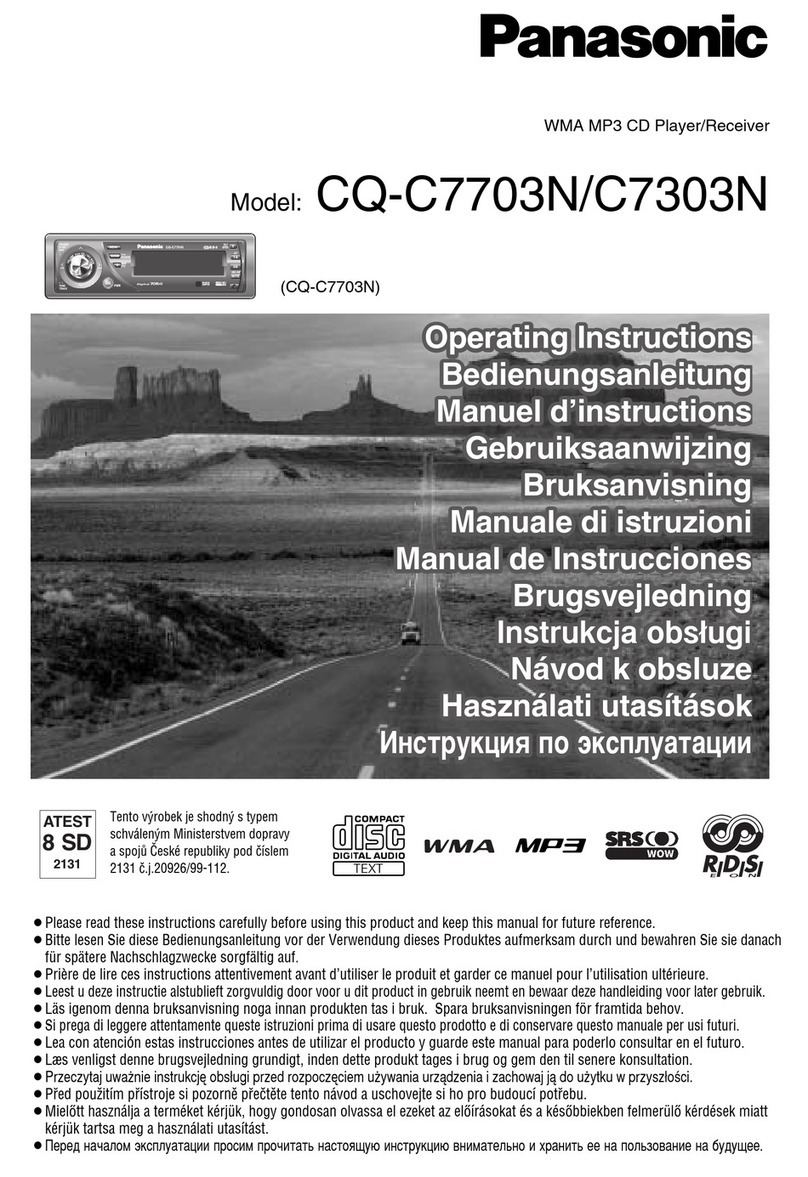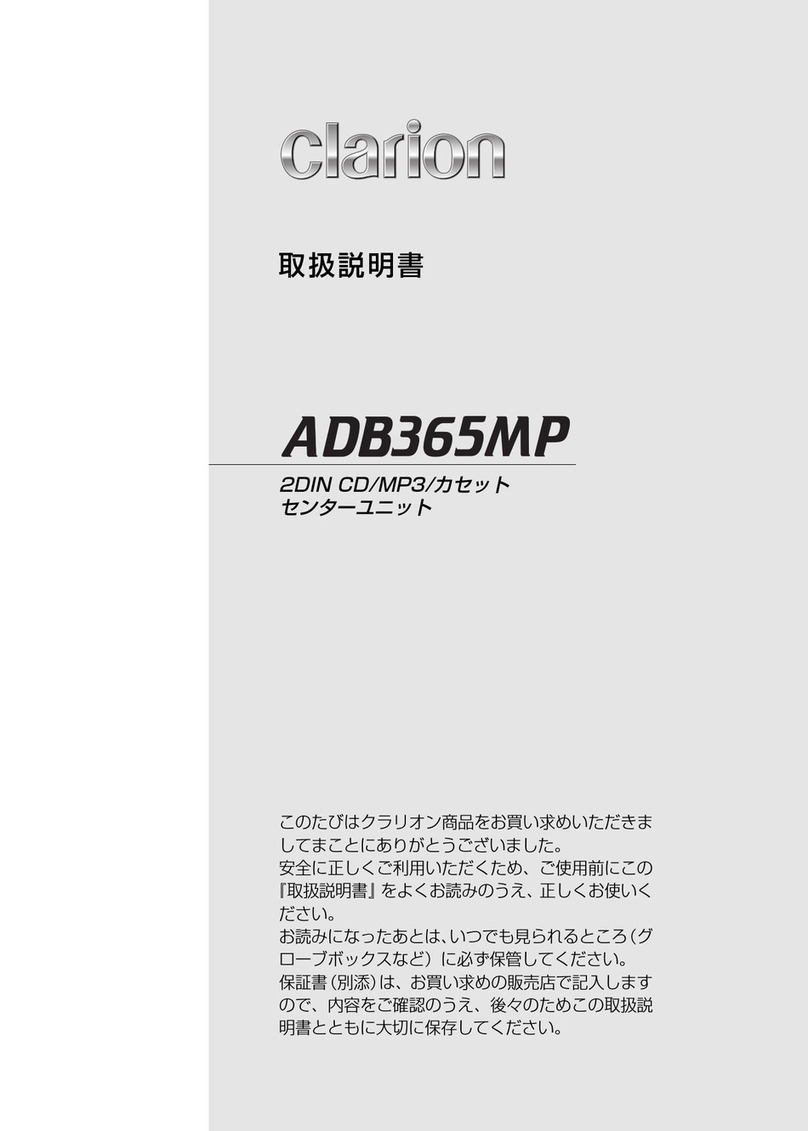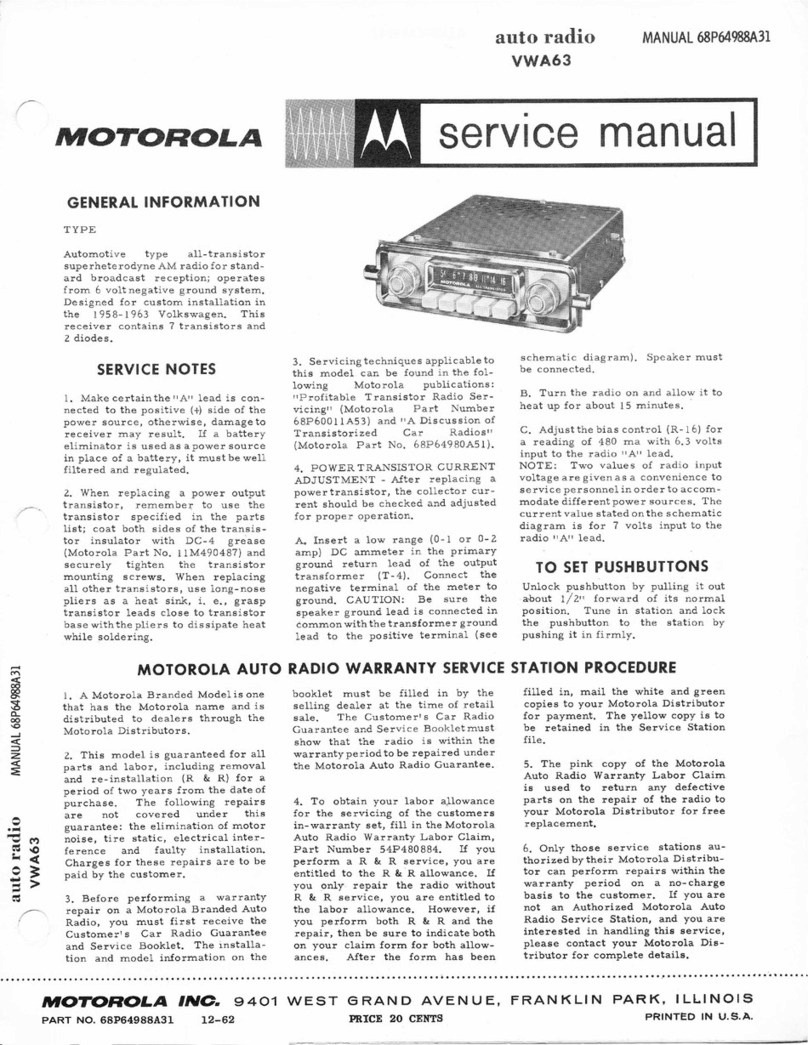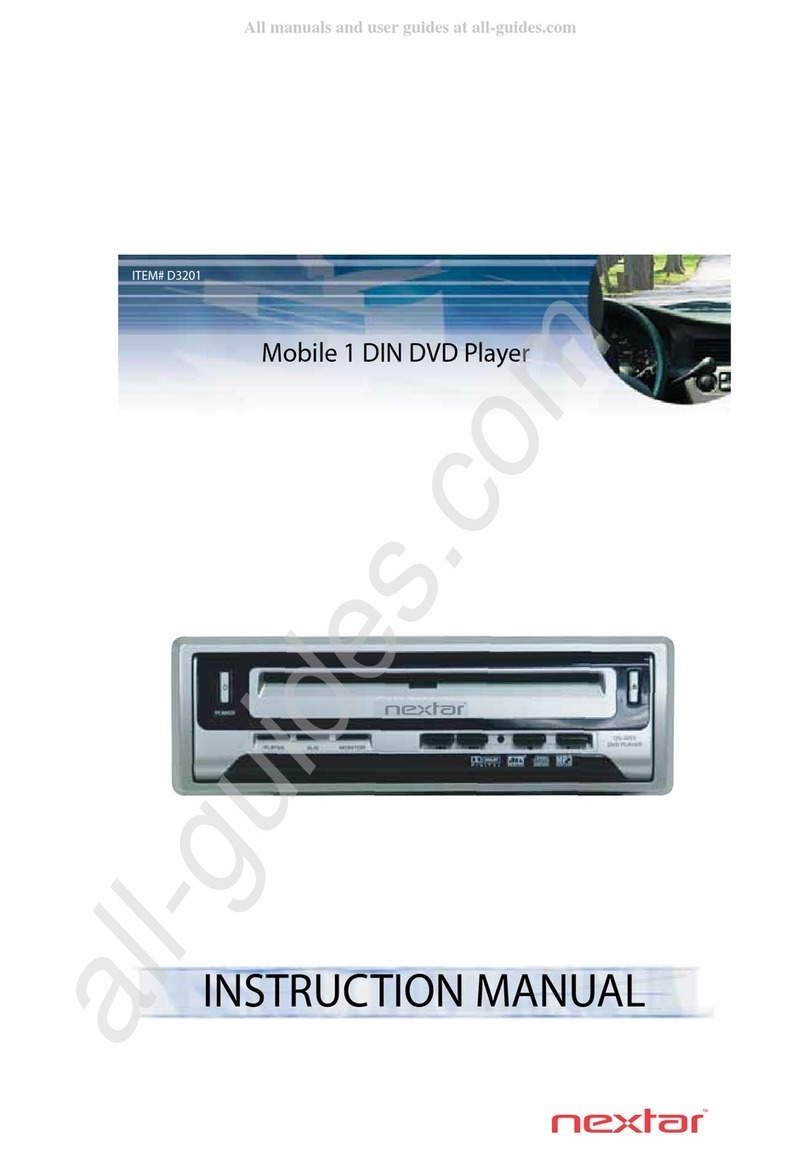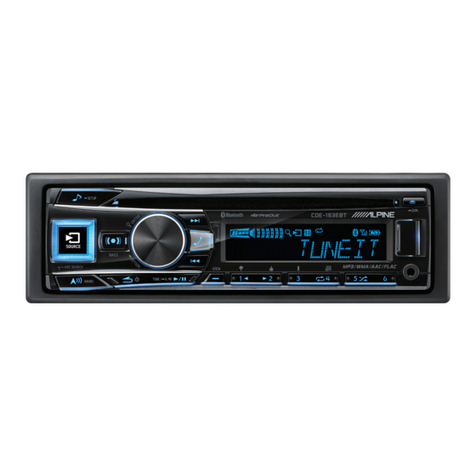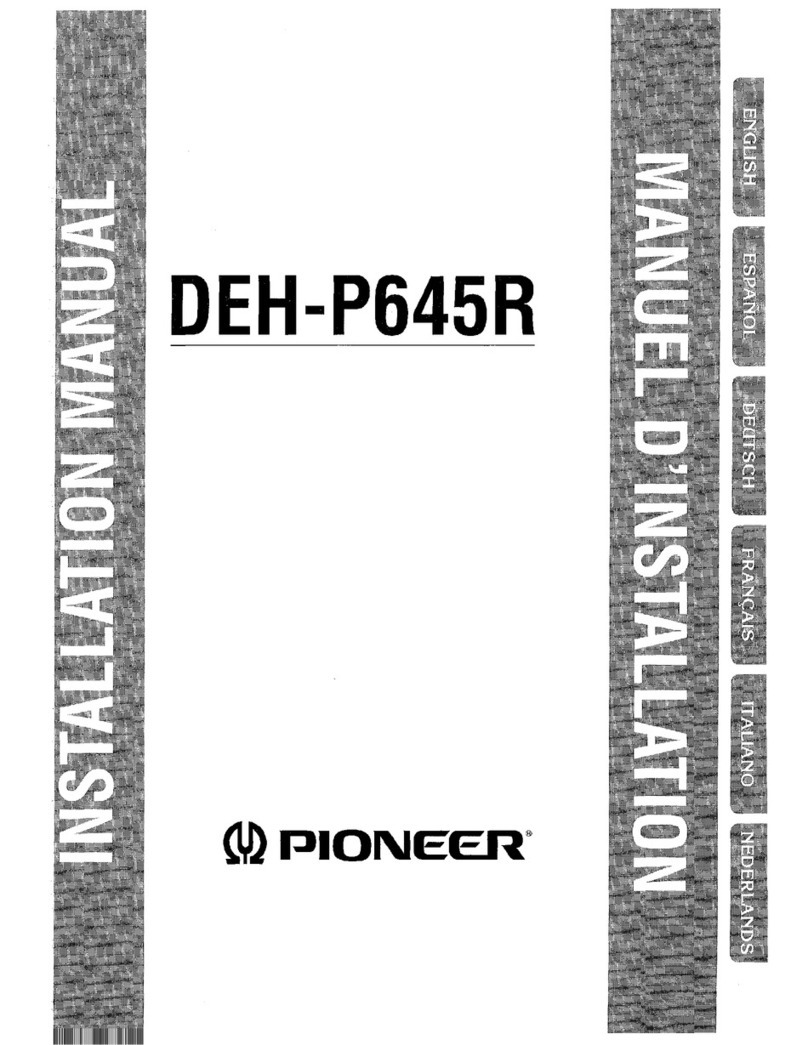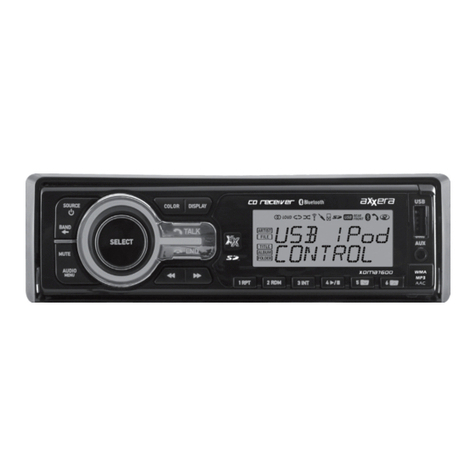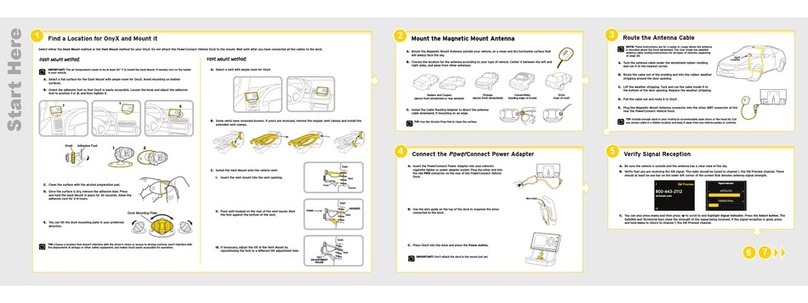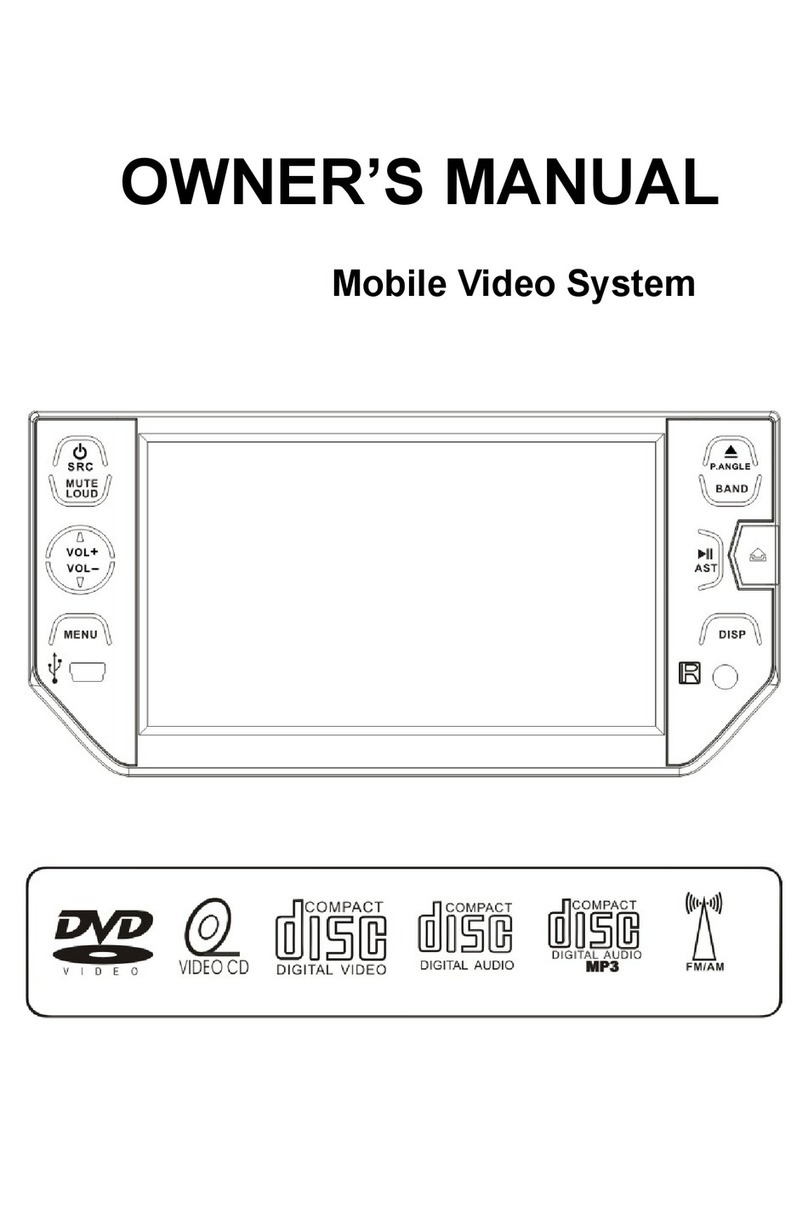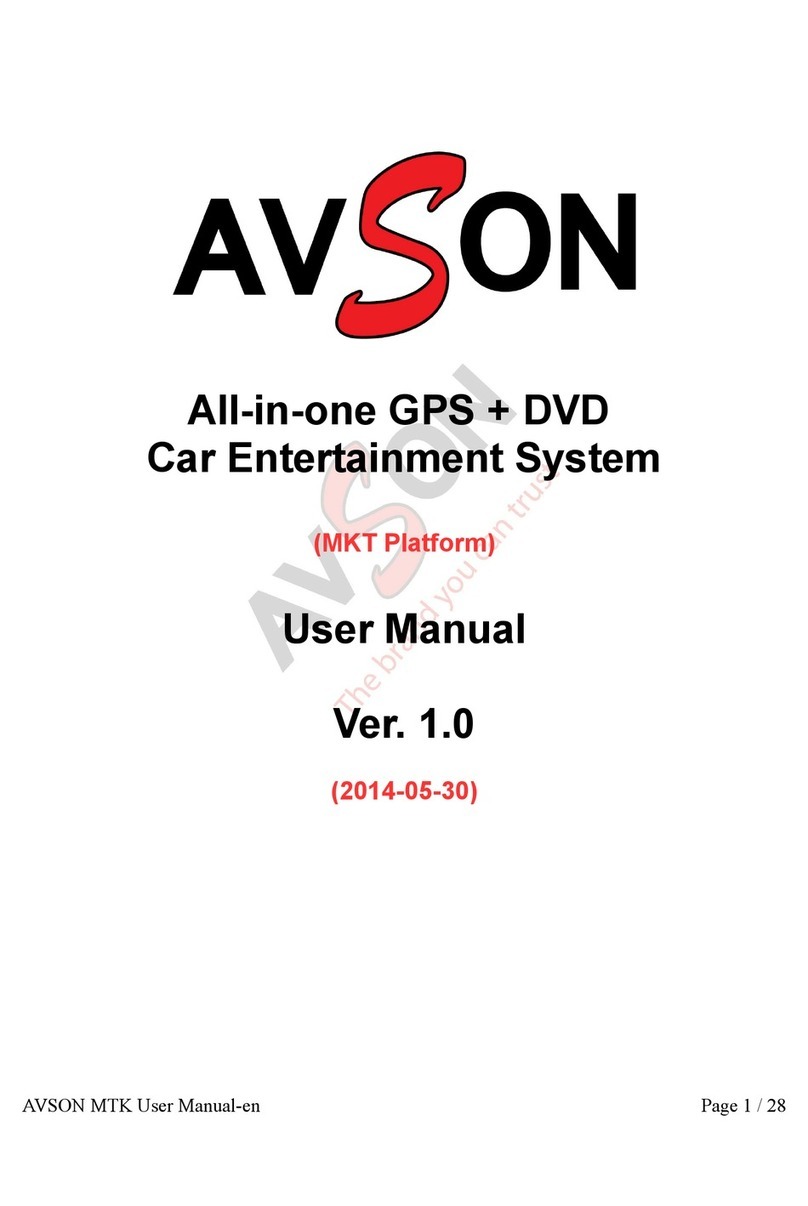
1-2 (No.MA161)
SPECIFICATION
NAVIGATION SYSTEM
System & Service L1, C/A code
Global Positioning System
Standard Positioning Service
Reception System 15-channel multi-channel reception system
Reception Frequency 1 575.42 MHz
Sensitivity -130 dBm
Update Rate 1/second, continuous
GPS Antenna Polarization Right Handed Circular Polarization
Dimensions (approx.) 30.4 mm ×11.7 mm ×35.5 mm (W ×H ×D)
Cable (approx.) 5.0 m
Attachment mat size (approx.) 70 mm ×70 mm
AUDIO AMPLIFIER SECTION
Maximum Power Output Front 50 W per channel
Rear 50 W per channel
Continuous Power Output (RMS) Front 20 W per channel into 4 Ω, 40 Hz to 20 000 Hz at no more
than 0.8% total harmonic distortion.
Rear 20 W per channel into 4 Ω, 40 Hz to 20 000 Hz at no more
than 0.8% total harmonic distortion.
Load Impedance 4 Ω(4 Ωto 8 Ωallowance)
Equalizer Control Range Frequencies 60 Hz, 150 Hz, 400 Hz, 1 kHz, 2.4 kHz, 6 kHz, 12 kHz
Level ±10 dB
Signal-to-Noise Ratio 70 dB
Audio output level Digital (DIGITAL OUT: Optical) Signal wave length: 660 nm
Output level: -21 dBm to -15 dBm
Line-Out Level/Impedance 2.0 V/20 kΩload (full scale) Output Impedance: 1 kΩ
Color system PAL
Video output (composite) 1 Vp-p/75 Ω
Other Terminals SUBWOOFER OUT,CD changer
Steering wheel remote input
TUNER SECTION
Frequency Range FM 87.5 MHz to 108.0 MHz
AM (MW) 522 kHz to 1 620 kHz
(LW) 144 kHz to 279 kHz
FM Tuner Usable Sensitivity 11.3 dBf (1.0 µV/75 Ω)
50 dB Quieting Sensitivity 16.3 dBf (1.8 µV/75 Ω)
Alternate Channel Selectivity (400 kHz) 65 dB
Frequency Response 40 Hz to 15 000 Hz
Stereo Separation 40 dB
Capture Ratio 1.5 dB
MW Tuner Sensitivity 20 µV
Selectivity 65 dB
LW Tuner Sensitivity 50 µV
